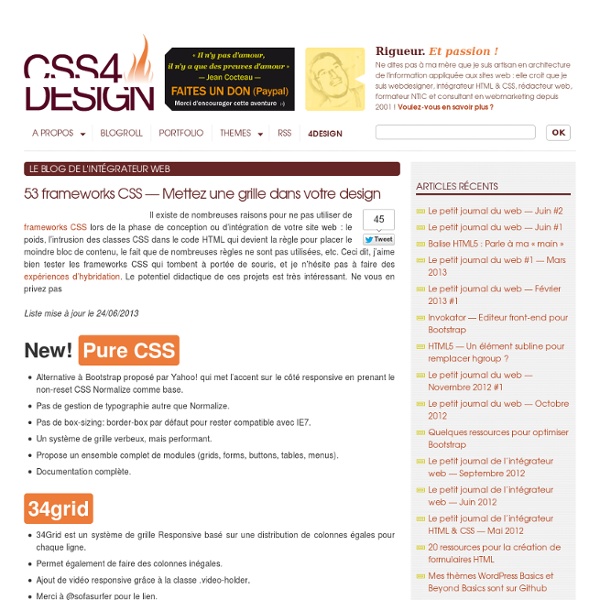



Adapt.js - Adaptive CSS Thinking Outside the Grid Flying into my home city of Tucson, Arizona late one night in November, I was impressed by how rigid a grid the city’s layout is. Tucson is one of America’s planned cities, and from the sky, it’s easy to see that Tucson’s designers succeeded in creating a city in which everything is laid out according to a precise plan (figure 1). I was returning home from London, which in contrast is far from a rigid grid. Figure 2 Because I’d been thinking about this article for some time, the aerial view of these cities struck me as an apt metaphor for grid design on the web. Sense and the city#section1 If we extend the urban-planning metaphor to web design, there are very interesting parallels. On the plus side, Tucson certainly is easy to get around in; you needn’t have much more than a basic sense of direction or a street map. London, unlike Tucson, is a maze. When examining deconstructed and spontaneous designs, the metaphor persists. Coding the grid fantastic#section2 Figure 7 Figure 9 Figure 11
Five simple steps to designing grid systems – Part 1 – July 4th, 2005 – The first part of this Five Simple Steps series is taking some of the points discussed in the preface and putting it to practice. Ratios are at the core of any well designed grid system. Sometimes those ratios are rational, such as 1:2 or 2:3, others are irrational such as the 1:1.414 (the proportion of A4). Starting with a blank canvas It’s always easier in these kinds of tutorials to put the example in context, in some kind of real world scenario. Subdividing ratios The grid system we are going to design is a simple symmetrical grid based on a continuous division of the paper size in the ratio 1:1414. This is one of the easiest ways to create a balanced grid. Diagrams kindly updated by Michael Spence Getting creative Many have said grid systems can stifle creativity, but I disagree. So, we have our grid. Diagram 7 shows the text area with the first elements of the access structure - running heads and folios. Short but sweet A simple step to begin with. The series
Media Queries Browser Statistics Golden Grid System GGS was my next step after Less Framework. Instead of a fixed-width grid, it used a fully fluid-width one, without even a maximum width. The resources it was published with are still available on GitHub. The idea was to take a 18-column grid, use the outermost columns as margins, and use the remaining 16 to lay elements out. While the grid's columns were fluid — proportional to the screen's width — the gutters (spaces between the columns) were proportional to the font-size being used. GGS also contained a set of typographic presets, strictly to a baseline grid. Correctly setting all of these measurements is difficult, of course. When published, GGS gained a lot of attention, as the web design community was searching ways to work with fluid-width grids, which have always been troublesome, running counter to many graphic design principles. Many people trying to use GGS were also confused by the lack of predefined code for working with the grid.
960 Grid System Cooking with Typography: 4 Fundamentals Content is king – we’ve heard it said almost a thousand times now. But content without good design won't ever garner the respect it deserves. Typography helps give content its voice. Because of this, it is one of many facets of design that we as web professionals should take the time to master. Typography is the art and study of arranging letterforms and words. It’s not just about ensuring the readability and scannability of text on various mediums. Good typography requires a great deal of creative intuition, but to master typography, you also need to learn its fundamental rules. If you find yourself so intimidated by the idea of typography that you prefer to stick to using a couple of reliable (but rather generic) typefaces in ALL of your designs, you’re not alone. Think of good web typography as a soufflé. Let’s start cooking. 1. In the tea-room the fear of repetition is a constant presence. Repetition is boring; contrast breaks monotony and creates drama. 2. Tracking and Kerning 3. 4.